When a company implements or reviews their Drug Free Workplace Program there is a lot to consider, one important factor is the testing method that will be used for the specimen collection. For most employers, the key factors to consider are: is the employee doing drugs and if so, how far back can a drug test show results of use; and secondly, how likely is it that they can adulterate the sample. Each method has its pro's and con's and technology is constantly changing.
When deciding upon which drug testing method to use, there are a few things you will want to keep in mind:
- Weigh the advantages and disadvantages of each collection procedure
- Determine the period of detection
- Understand the drug concentration and performance standards
- Identify the accuracy measures of each methodology
Drug Testing Methodologies
The best thing about instant urine analysis testing is that in about 4 minutes you will have the 'result'. There is also protocol that will allow for a collection of both the instant and lab based tests at the same time, which manages confirmation of non-negative instant test results. The period of detection is about 3 days depending on consistency and length of time of the drug(s) taken, and the donors metabolism.
Disadvantages are that urine testing can easily be adulterated unless the donor is contacted and immediately escorted to their test and the proper protocol is followed. Even then, adulteration can occur. Further, cutoff concentrations are not always accurate, concentration may be influenced by water intake, we find that the reading on an instant test cup can be off as much as 5% of the time, and litigation risks exist unless the results are confirmed by a lab.
Urine (laboratory-based results)
Lab based urine analysis is the most common and accepted drug testing procedure. Drugs and metabolites are highly concentrated in urine. Uniformed testing criteria has been established and there is statistical data and testing procedures that minimize any litigation risk as long as the collector follows proper protocol.
Disadvantages are that urine testing can easily be adulterated unless the donor is contacted and immediately escorted to their test and the proper protocol is followed. Still, adulteration can occur, but considerably less likely. Lastly, concentration may also be influenced by water intake.
Oral drug testing methods are very useful in detecting recent drug use, providing detection of drug use from 12 to 48 hours. This form of testing can be both instant or lab based and is easily accessible, fast, convenient, and considered to be a safe, non-invasive approach. In addition to this, oral fluid testing has been successful in identifying parent drugs as opposed to metabolites. Another advantage to this testing method is that there are lower chances of adulterating or tampering results.
Disadvantages in oral fluid testing is that detection is the shortest of all drug testing; the drugs that are tested for are not consistent in all the labs; there can be issues if not enough oral fluid is provided for lab purposes; and oral fluid testing does not have the litigation history that other testing has.
Hair Follicle Drug Testing provides highly accurate results and provides indication of the duration of drug use. Detection can go back 90 days or more depending on the length of the hair and process the hair has been subjected to. In addition to this, hair drug testing makes it difficult for specimens to be altered. Using this testing approach makes it easy to obtain, store, and ship specimens.
Disadvantages to hair follicle testing is that recent drug use is not determined and men or women with little to no hair are a challenge as 40 mg of hair (or approximately 50 to 70 strands at a length of 1.5 inches) is needed. There is also some litigation risk with this form of testing.
Two Additional Important Factors
- An instant test result that reads as 'positive' should be considered a non-negative until a lab has completed the verification process through the gas chromatography/mass spectrometry (GC/MS) method.
- It is important to remember that any drug testing that is regulated by the Department of Transportation or the Texas Department of Licensing and Regulation require lab based urine analysis testing; specifically, a 5 panel lab-based urine analysis.
Regardless of which method is implemented, each approach strives to provide the highest quality and most accurate results. Each approach can also be performed on site, by certified professional collectors. Keep in mind, each drug testing methodology provides its own advantages and disadvantages. When deciding which method is most appropriate, ensure you investigate the benefits of each method prior to incorporating within your organization. As a result, your organization can save time, money, resources, and minimize other unwarranted inconveniences.

.png?width=500&height=500&name=Blue%20and%20White%20Classic%20Shield%20Financial%20with%20Star%20Logo%20Design%20(1).png)


